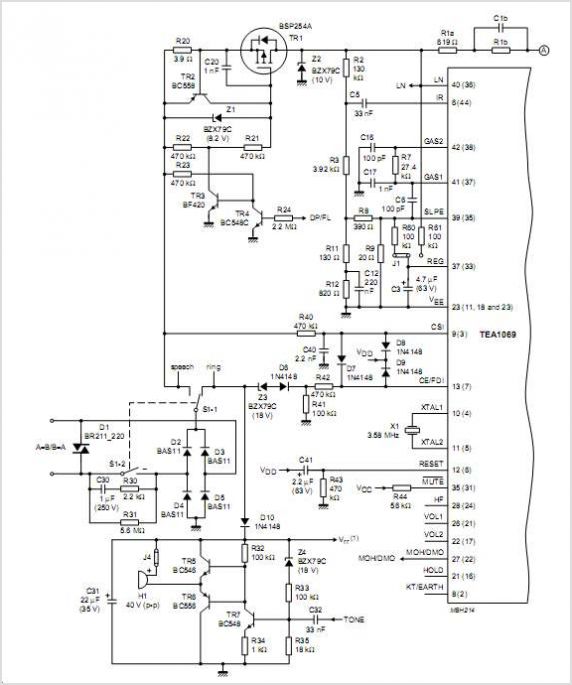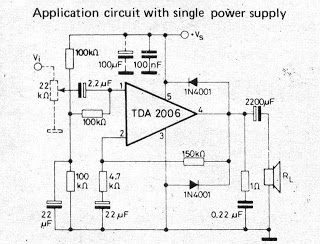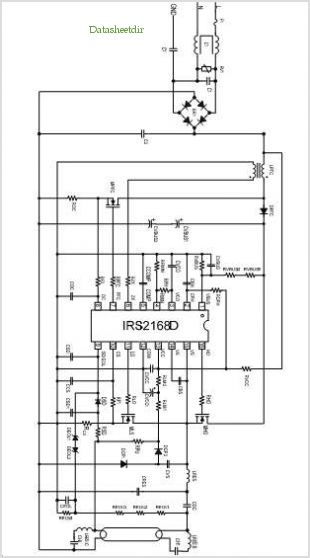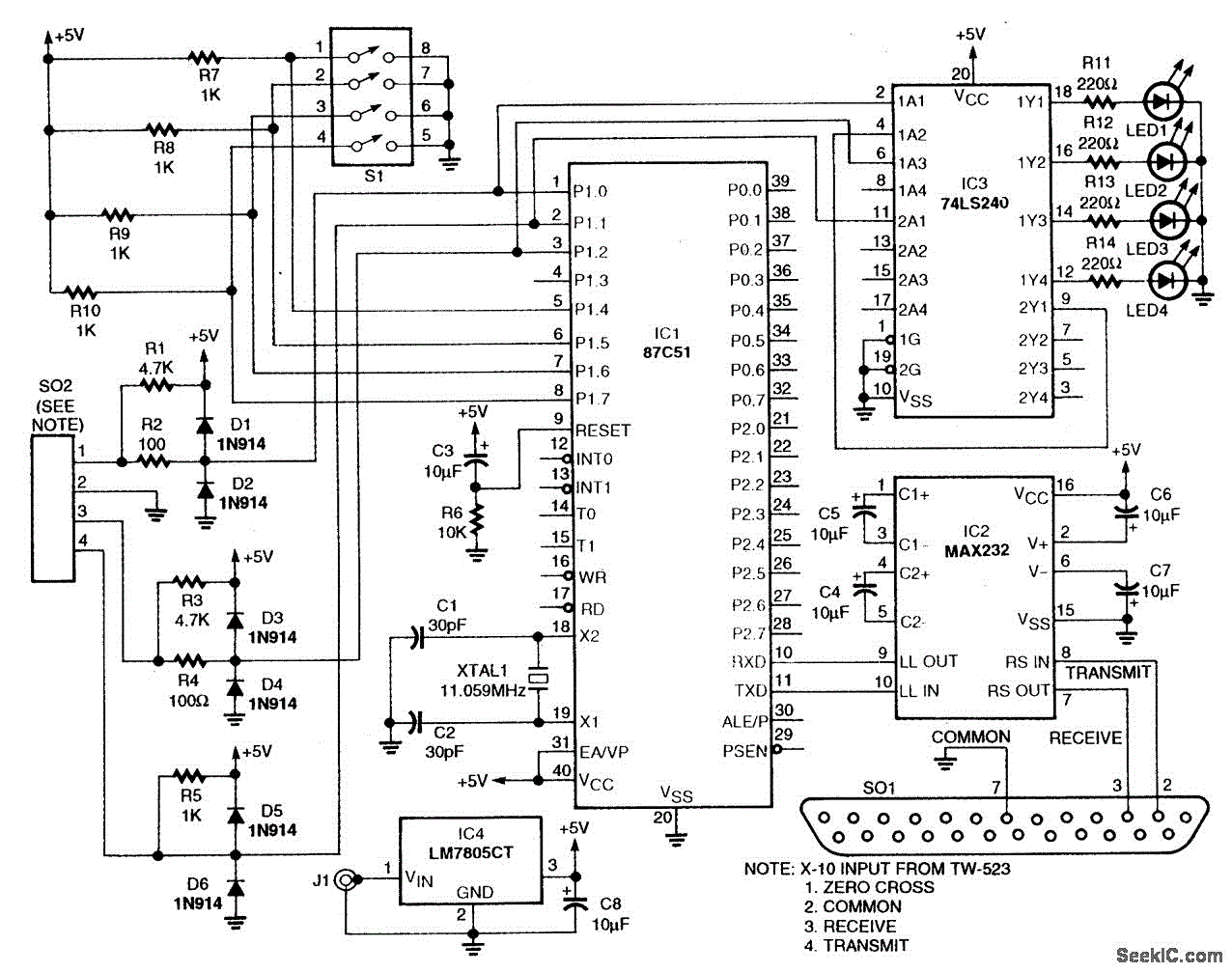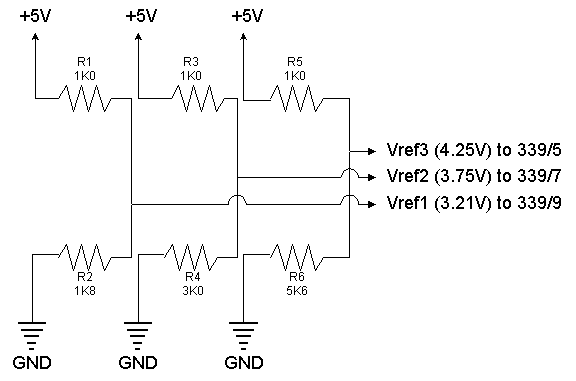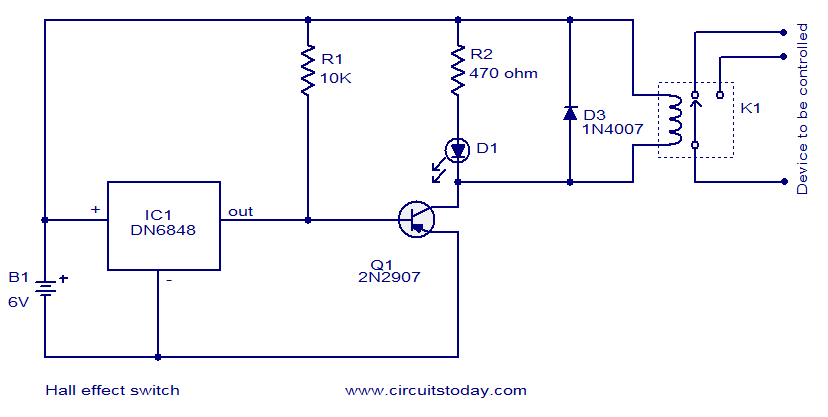
144MHz All Mode Transceiver
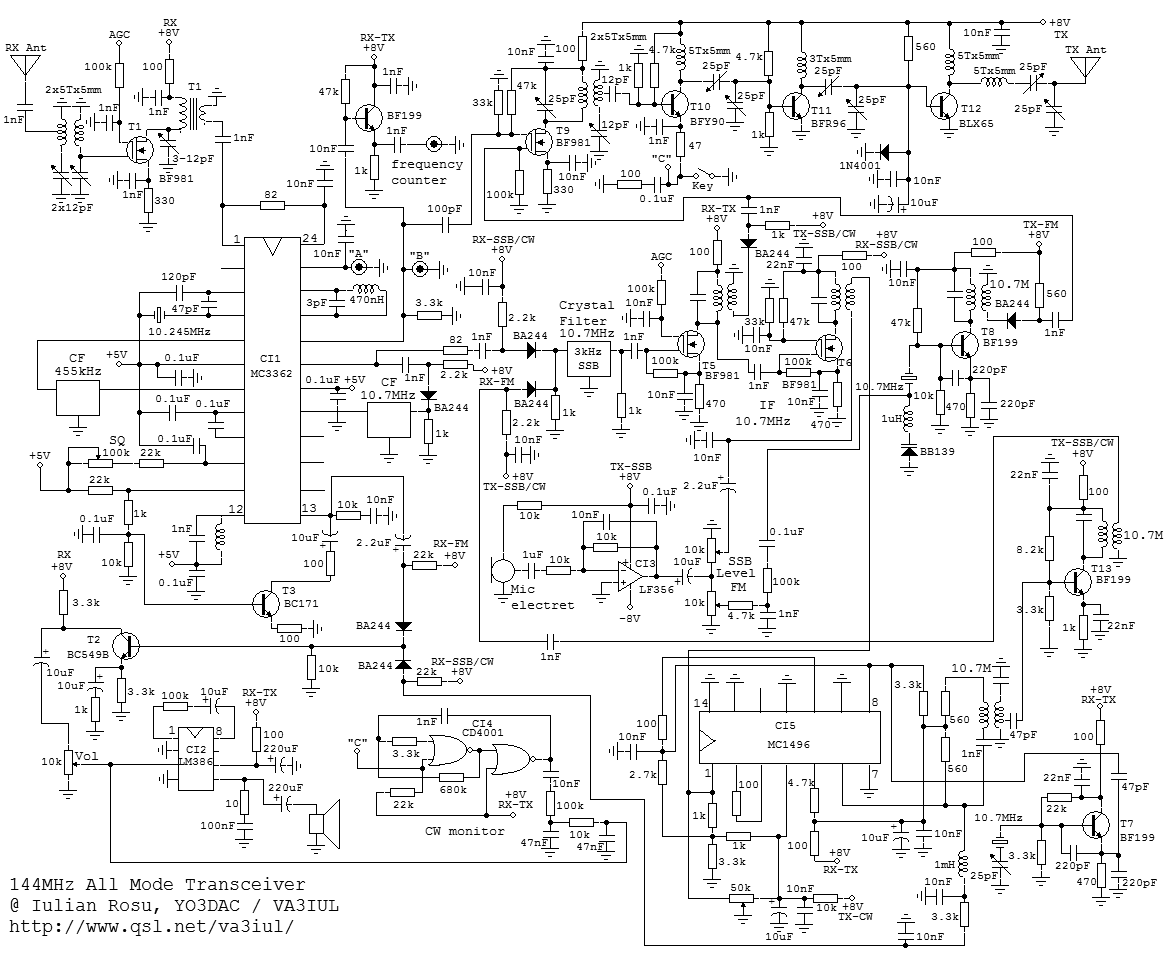
The primary feature of the transceiver described below is its simplicity while providing good performance at a minimal cost. The radio utilizes the MC3362 integrated circuit, which serves as an FM receiver with double conversion and includes nearly all the necessary components for building a radio. It starts with an RF amplifier and concludes with an FM demodulator, incorporating a VCO that operates up to 180 MHz, a local oscillator (LO) at 10.245 kHz, two mixers, and intermediate frequency (IF) amplifiers. By employing T1 in the front-end, the sensitivity is achieved at 0.2 µV/50 ohms at the antenna port. In the receive path, the signal is amplified by T1 and forwarded to pin 1 of the MC3362. The voltage control for the internal VCO is provided at pin 23, which must not exceed the Vcc of the MC3362, set at +5V. The VCO voltage can be supplied by a phase comparator within a synthesizer or through a tuning potentiometer, although the latter option may compromise frequency stability. At pin 20 of the MC3362 (VCO output), there is 300 mV of RF, sufficient to drive the TX mixer (gate 2 of T9). FM audio is available at pin 13, and the signal for single sideband (SSB) and continuous wave (CW) is obtained from pin 19, with a 10.7 MHz crystal filter in place. T5 and T6 function as IF amplifiers, while the MC1496 acts as the product detector in RX mode and as a double-sideband (DSB) balanced modulator in TX mode. For CW transmission, this modulator operates as an unbalanced modulator using a DC voltage +TX/CW. The 10.7 MHz crystal filter is also utilized in TX/SSB mode to attenuate one of the sidebands. T5 serves as the carrier local oscillator, and T8 is designated as the FM modulator. The 3W TX output is generated using a BLX-65. An LF356 is employed for the microphone amplifier, and an LM-386 is used for the audio power amplifier. The variable oscillator (synthesizer board) operates within a range of 1 to 3 MHz. By utilizing a 44.1 MHz crystal (T15), the third harmonic (132.3 MHz) can be selected, which is mixed with the VCO signal to produce an RF signal within the 1 to 3 MHz range. This, along with the voltage-controlled oscillator (VFO) output, is fed into the phase comparator CD4046. The error voltage at pin 13 of the CD4046 serves as the voltage control for the internal VCO of the MC3362. To display the operating frequency, either the VCO output (pin 20 of MC3362) or the VFO output (pin 10 of CI-6) may be utilized.
The transceiver circuit is designed to operate efficiently while maintaining ease of assembly and low cost. The MC3362 integrated circuit serves as the heart of this design, combining multiple functions into a single chip. The RF amplifier, represented by T1, is critical for ensuring that weak signals can be effectively processed, providing a sensitivity of 0.2 µV at the antenna port. This level of sensitivity is essential for reliable reception of weak signals in various operating conditions.
The internal voltage-controlled oscillator (VCO) is a key component that enables frequency modulation. The design allows for frequency tuning through either a phase comparator or a potentiometer, although the latter may introduce some instability. The output from the VCO is robust enough to drive the TX mixer, facilitating efficient transmission.
The use of the 10.7 MHz crystal filter is crucial for both RX and TX modes, as it allows for the selective filtering of signals, thereby enhancing the quality of reception and transmission. The MC1496 integrated circuit plays a dual role in the design, functioning as both a product detector and a balanced modulator, which simplifies the overall architecture and reduces component count.
For audio processing, the LF356 serves as a microphone amplifier, ensuring that audio signals are adequately amplified before transmission. The LM-386 is employed as an audio power amplifier, which provides sufficient output power for driving speakers or headphones.
The synthesizer board, with its variable oscillator, allows for precise frequency control and stability. The ability to select harmonics of the crystal frequency expands the operational range of the transceiver, enabling it to cover different frequency bands effectively.
Overall, this transceiver design exemplifies a balance between simplicity and performance, making it suitable for various applications in amateur radio and other communication systems. The integration of multiple functions within a single IC streamlines the design process, reduces the number of external components required, and ultimately lowers production costs while maintaining high-quality performance.The main characteristic of the transceiver presented below is the simplicity, but in the same time giving good performance, with a minimum investment. The radio is based on MC3362 ( buy ). This integrated circuit its an FM receiver, double conversion, which have inside almost everything that you need to build a radio.
Starting with an RF amplifier and ending with an FM demodulator. Including a VCO up to 180MHz, LO for 10. 245Khz, two mixers, IF amplifiers. Using T1 in the front-end the sensitivity will be 0. 2uV/50ohms at the antenna port. On the RX path, the signal is amplified by T1 and foreword to the pin 1 of MC3362. The voltage control of the internal VCO is pin 23, voltage that must not be higher than Vcc of the MC3362, in our case +5V. The VCO voltage control could be given by a Phase Comparator part of a synthesizer, or could a tuning potentiometer.
Of course, in the last case the frequency stability is not the best. At pin 20 of MC3362 (VCO out) we have 300mV of RF, enough to drive the TX mixer (gate 2 of T9). FM audio is on pin 13. From pin 19 we pick-up the signal for SSB and CW. The filter on this path is a 10. 7MHz Crystal Filter. T5 and T6 are IF amplifiers. MC1496 ( Digi-Key ) is the product detector in RX and DSB balanced modulator in TX mode. For CW carrier this modulator becomes an unbalanced modulator using a DC voltage +TX/CW. The 10. 7MHz crystal filter is used also in TX/SSB to attenuate one of the side bands. T5 is the carrier LO and T8 is the FM modulator. The 3W TX output is obtained using a BLX-65. For microphone amplifier we use an LF 356 and for audio power amplifier LM-386. The variable oscillator (synthesizer board) working in a range of 1 to 3 MHz. Using a 44. 1MHz crystal (T15) we can select the third harmonic (132. 3MHz) which is mixed with VCO signal, and become an RF signal in a range of 1 to 3MHz. This together with VFO output, are applied to the input of the Phase Comparator CD4046 ( Digi-Key ). The error voltage (pin 13 of CD4046) is the voltage control of the internal VCO of MC3362. To display the working frequency we can use the output of the VCO (pin 20 of MC3362) or VFO output (pin 10 CI-6). 🔗 External reference
The transceiver circuit is designed to operate efficiently while maintaining ease of assembly and low cost. The MC3362 integrated circuit serves as the heart of this design, combining multiple functions into a single chip. The RF amplifier, represented by T1, is critical for ensuring that weak signals can be effectively processed, providing a sensitivity of 0.2 µV at the antenna port. This level of sensitivity is essential for reliable reception of weak signals in various operating conditions.
The internal voltage-controlled oscillator (VCO) is a key component that enables frequency modulation. The design allows for frequency tuning through either a phase comparator or a potentiometer, although the latter may introduce some instability. The output from the VCO is robust enough to drive the TX mixer, facilitating efficient transmission.
The use of the 10.7 MHz crystal filter is crucial for both RX and TX modes, as it allows for the selective filtering of signals, thereby enhancing the quality of reception and transmission. The MC1496 integrated circuit plays a dual role in the design, functioning as both a product detector and a balanced modulator, which simplifies the overall architecture and reduces component count.
For audio processing, the LF356 serves as a microphone amplifier, ensuring that audio signals are adequately amplified before transmission. The LM-386 is employed as an audio power amplifier, which provides sufficient output power for driving speakers or headphones.
The synthesizer board, with its variable oscillator, allows for precise frequency control and stability. The ability to select harmonics of the crystal frequency expands the operational range of the transceiver, enabling it to cover different frequency bands effectively.
Overall, this transceiver design exemplifies a balance between simplicity and performance, making it suitable for various applications in amateur radio and other communication systems. The integration of multiple functions within a single IC streamlines the design process, reduces the number of external components required, and ultimately lowers production costs while maintaining high-quality performance.The main characteristic of the transceiver presented below is the simplicity, but in the same time giving good performance, with a minimum investment. The radio is based on MC3362 ( buy ). This integrated circuit its an FM receiver, double conversion, which have inside almost everything that you need to build a radio.
Starting with an RF amplifier and ending with an FM demodulator. Including a VCO up to 180MHz, LO for 10. 245Khz, two mixers, IF amplifiers. Using T1 in the front-end the sensitivity will be 0. 2uV/50ohms at the antenna port. On the RX path, the signal is amplified by T1 and foreword to the pin 1 of MC3362. The voltage control of the internal VCO is pin 23, voltage that must not be higher than Vcc of the MC3362, in our case +5V. The VCO voltage control could be given by a Phase Comparator part of a synthesizer, or could a tuning potentiometer.
Of course, in the last case the frequency stability is not the best. At pin 20 of MC3362 (VCO out) we have 300mV of RF, enough to drive the TX mixer (gate 2 of T9). FM audio is on pin 13. From pin 19 we pick-up the signal for SSB and CW. The filter on this path is a 10. 7MHz Crystal Filter. T5 and T6 are IF amplifiers. MC1496 ( Digi-Key ) is the product detector in RX and DSB balanced modulator in TX mode. For CW carrier this modulator becomes an unbalanced modulator using a DC voltage +TX/CW. The 10. 7MHz crystal filter is used also in TX/SSB to attenuate one of the side bands. T5 is the carrier LO and T8 is the FM modulator. The 3W TX output is obtained using a BLX-65. For microphone amplifier we use an LF 356 and for audio power amplifier LM-386. The variable oscillator (synthesizer board) working in a range of 1 to 3 MHz. Using a 44. 1MHz crystal (T15) we can select the third harmonic (132. 3MHz) which is mixed with VCO signal, and become an RF signal in a range of 1 to 3MHz. This together with VFO output, are applied to the input of the Phase Comparator CD4046 ( Digi-Key ). The error voltage (pin 13 of CD4046) is the voltage control of the internal VCO of MC3362. To display the working frequency we can use the output of the VCO (pin 20 of MC3362) or VFO output (pin 10 CI-6). 🔗 External reference
